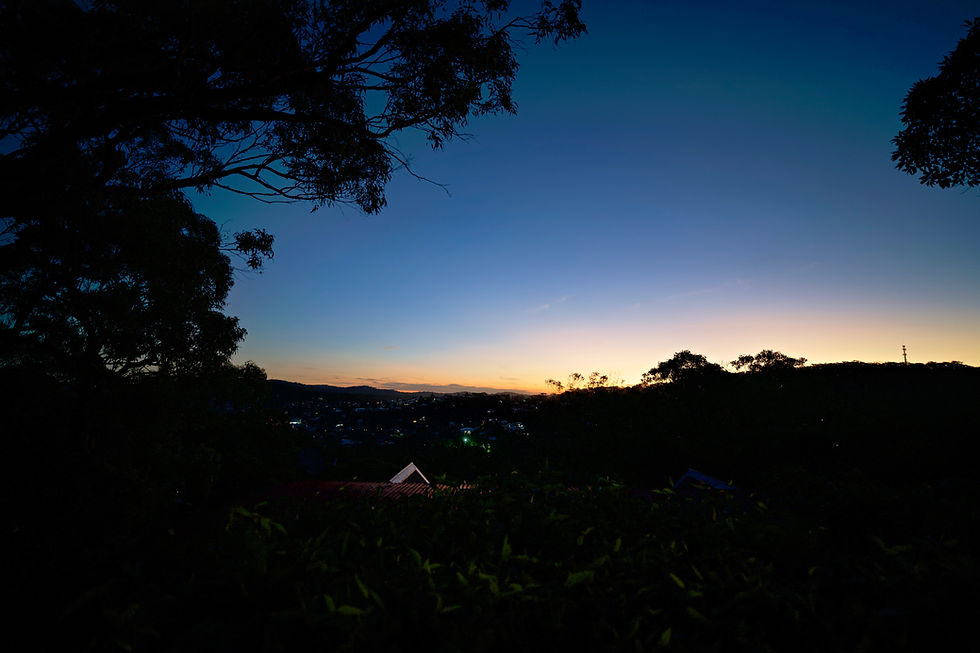Viltrox 16mm f/1.8 Z Vs Nikon Z 20mm f/1.8 Z S
- Rob Price

- May 23, 2024
- 6 min read
Firstly, a few quick caveats on the below.
One, if you want an in-depth, technical review, with test charts, etc, go and read Dustin Abbot's fantastic review. Or watch Richard Tatti's YouTube video on the lens. I know I did, that's why I bought one.
Secondly, everything below is my free opinion, and written as such. Not only did I pay for both lenses myself, I also have no affiliation with either brand. Yes, it hurts a little. I simply write what I think, good, bad, or indifferent.
Finally, the below pics are shrunk to fit the site, so there isn't much point in pixel-peeping. They are intended to give an indication of comparative performance, in comparative conditions, with comparative settings. Mainly because I need to justify keeping both lenses, to myself.

Viltrox 16mm, F/1.8
f/3.5, 1/8, ISO 400
This was never realy intended to be a comparison. Sure, the new Viltrox 16mm looked amazing, felt amazing (see part one on the build quality), but surely no one expected it to compete head-to-head. I know I had no intentions of doing so, until I shot a few pictures. Then, suddenly, I started to really wonder if I needed a 20mm AND a 16mm. Could I justify having both? With little to no thought whatsoever, I shot a couple of quick shots, if only to answer my own internal dialogue. I literally took a couple of photos of the nearest thing I could find with colour and a few straight lines, Lego, then ran them through Radiant Photo to normalise the two...

Nikon Z 20mm f/1.8 S
1/10, f/4.0, ISO 400.

Viltrox 16mm f/1.8
f/4, 1/10, ISO 400
Yes, our media room has become my son's Lego room. And yes, that's awesome.
Now, in the pics, there is a slight difference in colour rendition, but to be honest, after seeing these photos, then re-taking them multiple times, a slight change of angle and the difference in focal length, more than accounted for this. Also, with an aperture of f/4 (the lighting isn't what I'd call "bright"), the focal plane of both lenses was quite short, allowing for areas in the foreground and background to be out of focus. This is simply to show a few different facets of each lenses comparative performance. That sounded technical, I'll stop.
Without a chance to really try the Viltrox yet, along with a fast setting, late Autumn-sun, I quickly went to shoot a couple of shots into the distance. Here, I encountered my first opportunity to try the fn-2 button on the Viltrox, immediately focusing on the distant horizon. Party trick or not, it was kind of cool. I took two shots. Then two more. Then two in reverse order.

Nikon Z 20mm f/1.8 S
f/1.8,1/40, ISO 400

Viltrox 16mm f/1.8
f/1.8,1/40, ISO 400
Again, colour rendition, focal length, constantly changing lighting, blah, blah, blah. Every time I took another photo with the Viltrox, I'd reach for the Nikon, thinking I'd found a weak point. Every time, they were as close as any two photos shot with the same lens, with only the field of view changing. I had to be missing something, so I transferred to my TV, as if a larger screen would help. Nope, the photos were still disturbingly similar.
I took two things away from this.
First, the reminder that ultrawide lenses are NOT for fitting more in a picture. Sure that's a bonus in some circumstances, like astro for instance. But the real purpose of an ultrawide, in my humble opinion, is allowing the shooter to get closer to a subject, with the subsequent increase in field of view simply amplifying the subject (See Lego photos). This is why (astro again, sometimes differing) vignette is not necessarily a dirty word. Yes, it can be fixed in post, but that's not what I mean. To understand how to shoot with a wide angle lens, is to work with the lens, to embrace the effect vignetting can bring. There's a reason you can add it to any picture after the fact, it more often than not compliments correct usage of such a wide lens.
Again, that accidently sounded preachy and technical, but I'll allow it.
Secondly, that Viltrox has really created something special here. This isn't my first Viltrox lens, and, since my 13mm APC lens many moons ago, it's been obvious that they were very swiftly gaining momentum. But suddenly, they have gone from that, to being a serious force in lens manufacturing. A massive call, I know, but stay with me. Consider that the Nikon 20mm (I know I keep dropping bits off the name) is in prestigious territory, a space occupied by only a handful of lenses, when it comes to being a complete package. Over 100 years at the forefront of technology has led Nikon to a place where it can produce such an amazing piece of equipment. Then consider that a manufacturer (do we even need to state the country of origin anymore?) as young as Viltrox, is now even being compared to such. My real question, is what happens when someone, like Viltrox, starts making cameras? My guess is that my son is going to look at my Z7, the same way I look at the old SLR cameras I first used. Simply a bookmark in time, where things changed in amazing ways.
Anyway, the lens. So after the above results, along with the break in the horrendous weather we've been having at home, it was time to try the Viltrox out in the field. The first few shots, I went one-to-one again. Then once more...

Nikon Z 20mm f/1.8 S
f/3.5,1/60, ISO 400

Viltrox 16mm f/1.8
f/3.5,1/60, ISO 400
At this point in time, I gave up. In the soft glow of a breaking dawn, my feet saturated from from the icy puddles, back aching from the heft of my heavy bag, carried all the way down to shoot like a simple pack mule (why did I think I'd need my 180-600mm?), I was broken. It actually wasn't that dramatic, I simply couldn't be bothered changing lenses anymore. Now, the reason for this was, in-part anyway, due to Viltrox's decision to make the mounting alignment dot on their lens red, not white. Very hard to see in the near-dark.
And after one decent shoot, that's what I have come away with. My biggest complaint, once more, is a simply trivial issue, easily fixed with a white paint pen. My notes, quickly jotted in my phone as I wondered around, mentioning this dot, and the fact the aperture ring is easy to bump if throwing in and out of a bag (the screen on the lens doing a cracking job of showing me this at a mere glance). Yup, two one line negatives, along with a paragraph on how handy the fn-2 button and screen were. Two things that may seem like minor features, but when you are comparing two lenses that both perform at the highest level, these features may just be the biggest difference. Well they would be, if not for the build quality mentioned in Pt1 and the other big difference I'm trying not to talk about.
Yeah, so, um, is it rude to talk about price? Because taking away the fn buttons, the nifty little screen, the build quality, and you are (sort of) comparing two very similar lenses. But one is $1,799AUD, courtesy of Nikon Australia's website. And the other? We all know, but it's now even more amazing, $820AUD (Depending on your exchange rate. Viltrox, please add Australian pricing to your website, it's a headache trying to work out the conversion, thanks to the good people at PayPal).
That's not a small difference, that's more than double the price. In fact, I'd suggest that even if Viltrox was to have charged 50% more, it would still have a detrimental effect on the price of used, Nikon 20mm lenses. Yes, the lens hood is still garbage (but to its credit, didn't fall off once this morning), the red dot is impossible to see in a dark environment and the thing still attracts fingerprints on the satin finish. But they're my fingerprints and they're also impossible to see in the dark!
Next up, the litmus test, for me anyway, how does it handle astro?
For now, here's another photo, compressed to a measly 2.8mb. Able to set a fast enough shutter speed to stop water, while still capturing enough light to expose an image at f/4 and ISO 100? No problem.

Viltrox 16mm f/1.8
f/4, 1/125, ISO 100






Nice one..did you ever sell either of the lenses and why ?